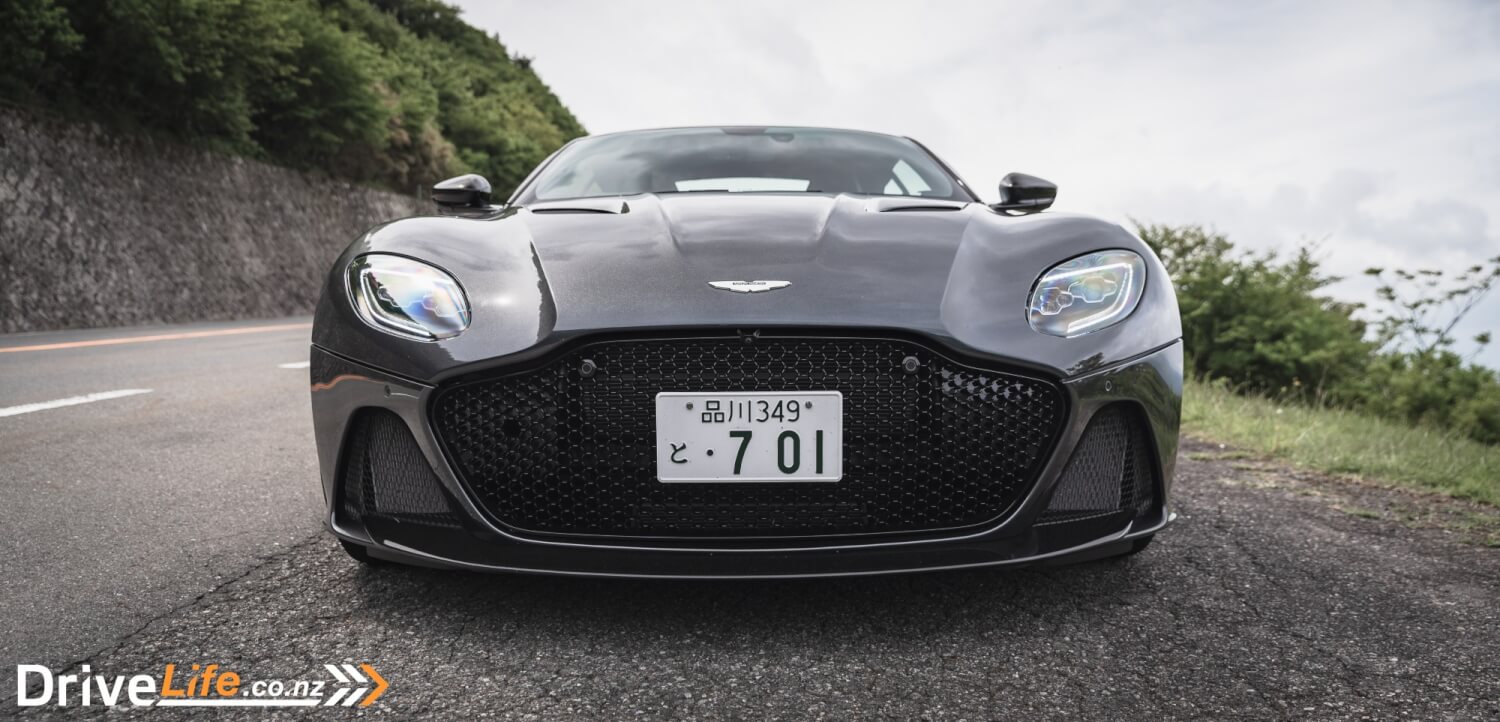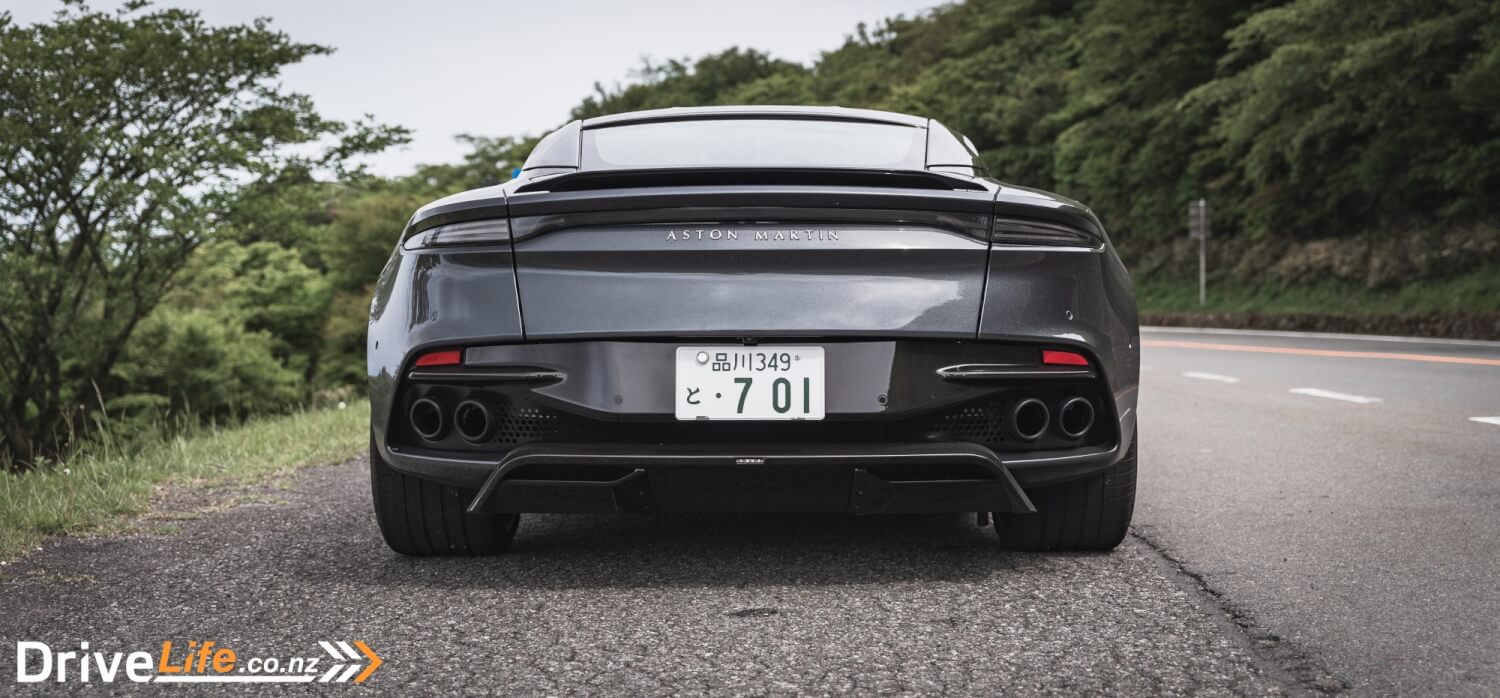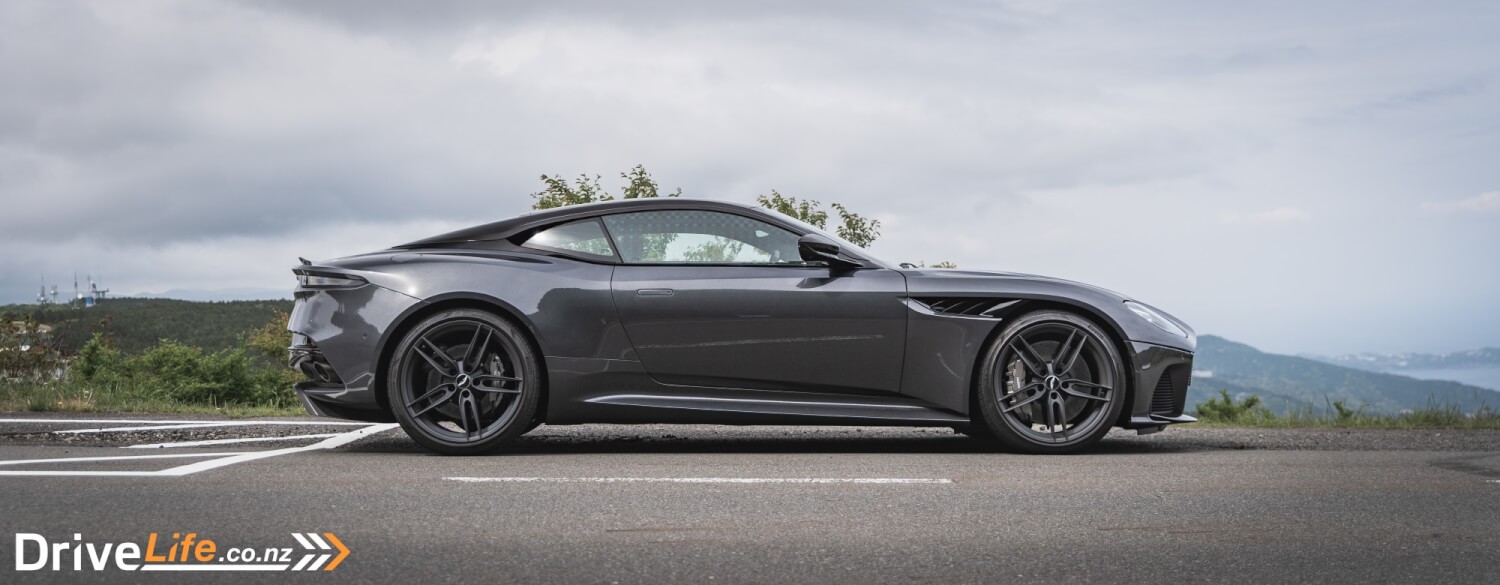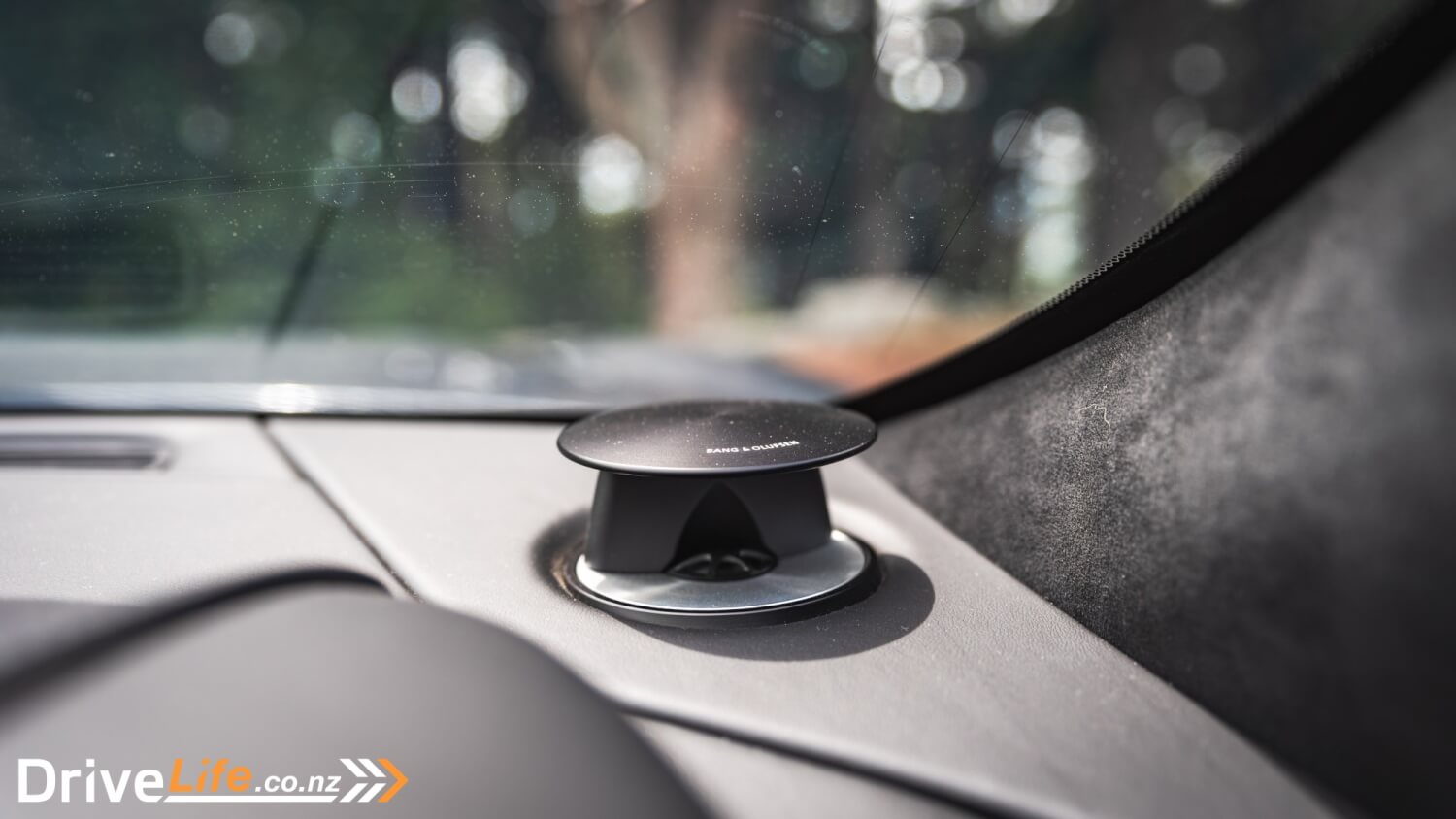When people ask me what’s the best car I’ve driven I usually respond with the McLaren 720S. Objectively, the 720S is one of the best supercars on the market right now. It’s comfortable enough for long-distance trips, has great visibility for daily use, and monstrous performance. But if people ask me what my favourite car I’ve driven have been I say the same three cars; the Honda Civic Type R, Alpine A110, and Aston Martin Vanquish S.



The Vanquish wouldn’t see the McLaren’s taillights on a track but who cares? Unless you’re a professional racing driver who knows what they’re doing you’re never going to get the most out of the Mac. The Aston, however, was a much more memorable experience with those superstar looks, an interior that feels like a jewellery store, and one of the most spine-tingling noises in the business. It might not be the most dynamic but, it was one of the most special and unforgettable experiences every time I got behind the wheel.
After 6 years in production, on a platform that can trace itself back to 2002, the Vanquish was replaced by this – the new DBS Superleggera. Bringing the ‘DBS’ name back, this new Superleggera aims to be both a supercar-beating grand tourer and every bit an old-school charmer every Aston should be.


What’s In The 2019 Aston Martin DBS Range?
You can only choose between a coupe or convertible body style. Both come with an uprated 5.2-litre twin-turbocharged V12 from the DB11. Only, it’s been turned up to 11. Power is now rated at 533kW, up from 447kW in the DB11 with a whopping 900Nm of torque. All of that is sent to the rear wheels only via an 8-speed ZF auto.
The ‘Superleggera’ bit in the name pays homage to Touring Superleggera, who helped Aston Martin with the coachwork of their GT cars in the 60s and 70s but also means ‘super light’. Staying true to this, Aston used a lot of lightweight materials for the DBS. The result is a near 200kg weight drop over the DB11, tipping the scales at 1675kg.


Add the tower of power from that gargantuan V12 engine and the DBS’ relative low weight and you’ve got yourself a proper super-GT capable of hitting 0-100 km/h in 3.4 seconds and a top speed 340 km/h. Those are impressive numbers in their own right and put the DBS in direct competition with the likes of other exotics such as the Ferrari 812 Superfast, McLaren 720S, and Lamborghini Aventador.
As with everything at this end of the spectrum, the $465,000 starting price for the Coupe is only the entry fee into this world of limitless personalisation. Aston Martin offers countless options, paint samples, and even a bespoke Q division should you wish to commission a more bespoke DBS than the Jones’.
First Impressions Of The 2019 Aston Martin DBS Superleggera
I mean, just look at it. It’s undoubtedly a stunning looking car. In fact, I’d go as far as to say it’s one of the best looking new cars on sale right now. You can make your own minds up about how it looks but the fact of the matter is the DBS is a handsome thing. It takes the base DB11, which is already a decent looking car, and pumps it up with steroids and aggression.

The first thing you notice is the larger grille which literally takes up the entire bumper. The bonnet has more aggressive lines and larger vents, the telltale sign of a more menacing beast. Over to the side of the car you’ve got a redesigned side exit vent, deeper skirts, and new lightweight wheels. But my favourite part is the more muscular rear fender, which adds to the DBS’ already purposeful stance. The rear is completely new with different taillights, a sportier diffuser, and spectacular quad exhausts.
As many of you might know, grey wouldn’t be our first choice of colour here at Drive Life but even the DBS manages to make grey look great. It looks special from every angle and people stop and turn their heads when this thing rumbles by.



What’s The Inside Like On A 2019 Aston Martin DBS Superleggera?
Inside, it’s very much the same as the the DB11 with a bit more chopped carbon fibre trim. There are a couple of changes to make it a bit sportier with a squarer and chunkier steering wheel, sportier seats which offer support around corners but still manage to be comfortable enough for long trips.
Having a similar interior to the DB11 brings with it the same positives and negatives. You can read more about the DB11 review here. While the new more modern digital displays are a welcome change to the ageing old analogue gauges in the previous generation Astons, the Mercedes-sourced infotainment system and some Mercedes switchgear are not. Or rather, there could’ve been more done to hide that the indicator stalks, centre console screen, and rotary dial/touchpad were lifted straight from a 10-year old C-Class. Previous generation Mercedes tech means this nearly half a million dollar 2019 car misses out on modern features such as Apple CarPlay/Android Auto, and wireless charging.




For the massive price increase between the DB11 and DBS I would’ve expected a bit more of a change in interior as they did with the interior. The rear seats are still useless for carrying any humans, though the boot is enough for a weekend bag or two. The quality of materials is flawless. An Aston Martin interior is a pleasure for all the senses. They use some of the best leather in the business that look as nice as it feels to touch and has a distinctive scent. It’s the same story with all the metalwork inside too. For noise, well it’s quite refined in the cabin shutting out most of the unwanted noise from outside but still lets you hear that incredible V12.
If, for some reason, you don’t want to listen to the V12 all day long the optional 13-speaker Bang and Olufsen sound system is one of the best I’ve heard in any car. It’s almost *almost* an alternative to listening to that glorious engine.







What Does The 2019 Aston Martin DBS Superleggera Drive Like?
There’s no escaping that V12. The moment you push the glass start button and it bursts to life with a roar from the Jurassic era, you know you’re in something special. There are three driving modes; GT, Sport, and Sport+, each one making the car a bit louder than before. But it doesn’t matter which mode you’re in, that engine will pull and pull.
There’s a seemingly endless amount of power on tap but it’s the torque that gets you. 900Nm is a ridiculous amount and you can ride that wave of torque all the way to a lot of trouble. Start to get a bit heavy with your right foot and it just thunders off into the horizon. What’s more impressive is how Aston have tuned the ZF 8-speed. In GT Mode and left to its own devices it shifts gears seamlessly, like most ZF 8-speeds. However, drive it in a sportier mode and the gearbox behaves differently. In Sport+, for example, it shifts like a single-clutch gearbox, giving you a good kick in the head on the upshifts. It’s quite extraordinary and adds to the sense of occasion.


It’s hard to believe it’s a twin-turbocharged unit because it sounds and behaves quite naturally aspirated. The noise, the noise is just intoxicating. No, it’s not as good as the old Vanquish’s 6.0-litre V12 but it’s pretty damn close. It’s loud too but not obnoxiously so. There’s still a classic old school muscular note to it, befitting its character. It doesn’t shout like a Lamborghini or Ferrari, you can still cruise around town without disputing people’s day with noise pollution. In Sport and Sport+ modes the exhausts give off plenty of pops and crackles for good measure, because that’s the world we live in now. It still does that unmistakably Aston noise where it sounds like a tyrannosaurus rex gargling when you lift off from 2000rpm at low speeds.
It’s fast and makes a good noise, so it’s pretty much like the Vanquish so far. Where it differs is around corners. It might have more power and torque than before but it’s easier to control. All the clever electronics keeps the DBS planted on the ground, as does the added aero such as the ‘virtual wing’ that uses air channeled from the c-pillars and pushes the larger fixed wing at the rear. The sticky Pirelli P-Zeros, for the most part, cope well enough with all that power but there were a few times it just couldn’t handle 900Nm of torque.


Don’t expect this to be a zippy mountain blaster by any means. The steering is still quite heavy in a typical GT sort of way. This is still very much a cross-continental blaster than a track day special. However, should you find yourself on a mountain road, the DBS can prove to be quite fun, if a little challenging. The front end dives into corners without a problem, it’s managing the throttle around corners that’s the biggest issue. You’re very much well aware of the power on tap and how eager the rear end is to let loose. Once you’ve got that in mind, the DBS’ chassis proves it’s a balanced thing. There’s very little body roll and only around tighter corners do you feel the 1.6 tonne weight.
Unless you’re driving like a complete dork the DBS is quite predictable. Is it going to be faster than a 4WD car like many of its competitors? No, it’s not but you’ll have a bigger smile on your face and you’ll be in an Aston Martin. Which you can then drive back home in complete comfort and luxury.

Even though this is a faster, more powerful, and lighter evolution of the DB11, it’s by no means more uncomfortable. Despite sitting lower to the ground and riding on fat tyres, it’s just as civilised as the DB11 or Vantage. The ride comfort is on the fine line between a supercar and a grand tourer, with NVH levels edging more towards the latter. Just don’t expect it to be frugal, Aston claim an average of 12.3L/100km, realistically I was getting closer to 16L/100km. Nevertheless, that’s still adequate for around 500km of touring range.
It does all the normal driving stuff perfectly well too, it is a front-engine GT car after all. The ride around town is supple enough to be able to consider this for daily driving duties. It’s also not stupidly low and wide that you’d need to worry about using a front axle lift everywhere, which is good because it doesn’t have a lift.

I hate to keep harping on about the ZF 8-speed but it really is brilliant. Around town and left in auto it’s completely easy to drive, except every now and then you hear the exhaust under acceleration and you’re reminded you’re in a 533kW Aston Martin Super GT. It’s a good feeling, that.
What’s The Competition For The 2019 Aston Martin DBS Superleggera?
| Brand/Model | Engine | Power/ Torque | Fuel, L/100km | 0-100 kph, seconds | Price |
| Ferrari 812 Superfast | 6.5-litre V12, petrol | 588kW/718NM | 14.9 | 2.9 | $700,000 (est) |
| Rolls-Royce Wraith | 6.6-litre V12 twin-turbo petrol | 465kW/800NM | 16 | 4.6 | $475,100 |
| Aston Martin DBS Superleggera | 5.2-litre V12 twin-turbo petrol | 533kW/900NM | 12.3 | 3.4 | $465,000 |
| McLaren 720S | 4.0-litre V8 twin-turbo petrol | 530kW/770NM | 10.7 | 2.9 | $456,000 |
| Porsche 911 Turbo S | 3.8-litre flat six twin-turbo petrol | 427kW/750NM | 9.1 | 2.9 | $418,000 |
| Bentley Continental GT | 6.0-litre W12 twin-turbo petrol | 467kW/900NM | 12.2 | 4.0 | $355,000 |
What’s The Pros and Cons For The 2019 Aston Martin DBS Superleggera?
| Pros | Cons |
| One of the best handling GTs around Proper everyday usability Feel good factor Mercedes infotainment is a huge improvement Felt more durable than older Astons Stunning design | Could’ve hidden the Mercedes bits better Interior could’ve been a bit more different to DB11 Still has proper ‘handmade’ quirks |
What do we think of the 2019 Aston Martin DBS Superleggera?
Aston’s top V12 grand tourer is more usable than ever. The breadth of its ability has far exceeded that of any of its predecessors. The performance is now up to par with the most exotic of supercars without sacrificing too much of that renowned Aston comfort, luxury, and most importantly, charm.

It’s not perfect; the interior could’ve been a bit more special compared to the DB11’s and there were a few bits and pieces that popped off during my time with it. Just your typical handmade British quirks. It might’ve lost some of the Vanquish’s magic, but few modern cars can live up to a naturally aspirated V12.
For what it is and for today’s world, the DBS Superleggera is a truly special multi-talented car that you could drive every day and still feel special every single time.

2019 Aston Martin DBS Superleggera – Specifications
| Vehicle Type | Supercar |
| Starting Price | $465,000 |
| Tested Price | $480,000 (est) |
| Engine | 5.2-litre V12 twin-turbo, petrol engine |
| Transmission | 8-speed auto ZF Touchtronic III with manual mode |
| 0 – 100 kph, seconds | 3.4 |
| Spare Wheel | None |
| Kerb Weight, Kg | 1,693 |
| Length x Width x Height, mm | 4712 x 1968 x 1280 mm |
| Cargo Capacity, litres | 368 |
| Fuel Tank, litres | 80 |
| Fuel Efficiency | Advertised Spec – Combined – 12.3L / 100km Real-World Test – Combined – 16.6L / 100km Low Usage: 0-6 / Medium Usage 6-12 / High Usage 12+ |
| Turning circle | 11.2m Small: 6-10m / Medium 10-12m / Large 12m+ |
| ANCAP Safety Ratings | N/A |
| Warranty | 3 year, 100,000km |












































